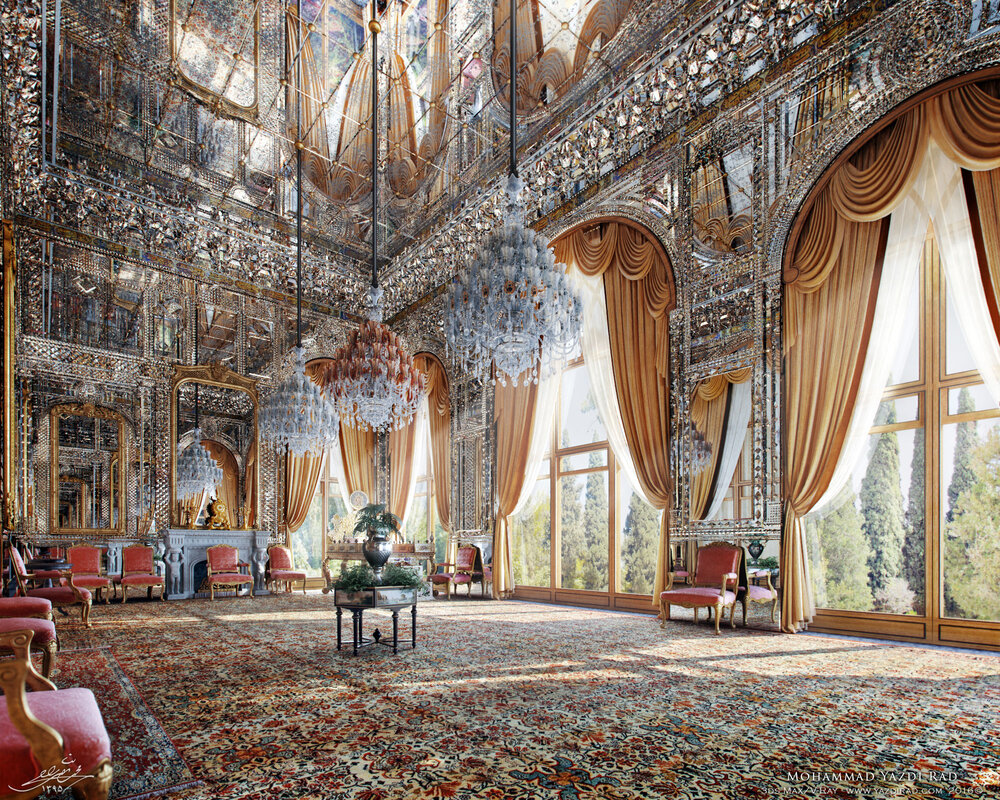Retrospective shows delicacy of mirrorwork in Iranian architecture

TEHRAN – Delicacy of mirrorwork in Iranian architecture is in the limelight at the UNESCO-registered Golestan Palace in downtown Tehran, where a retrospective of a veteran Iranian artisan is underway.
The exhibit features a select of over 30 pieces by Siavash Tarzi, who started the career in 1972, IRIB reported.
Calligraphy of Quranic verses, illuminated manuscripts, geometric patterns are among works that could be enriched through the art of mirrorwork, Tarzi said.
Mirror work, on the other hand, has very close bonds with different skills such as carpentry, tiling and stone carving, the artisan added.
Tarzi has also carried out restoration works at many historical sites and monuments across the country, notably ones at Golestan Palace, which its Mirror Hall (Talar-e Aineh) is very famous.
The fall of the Sassanid Empire (224–651) to invading Islamic forces ironically led to the creation of remarkable religious buildings in Iran. Arts such as calligraphy, stucco work, mirror work, and mosaic work, became closely tied with architecture in Iran in the new era. Archaeological excavations have provided sufficient documents in support of the impacts of Sasanian architecture on the architecture of the Islamic world.
Golestan Palace became a center of Qajari arts and architecture which is an outstanding example and has remained a source of inspiration for Iranian artists and architects to this day. It embodies a successful integration of earlier Persian crafts and architecture with Western influences.
AFM/MG
